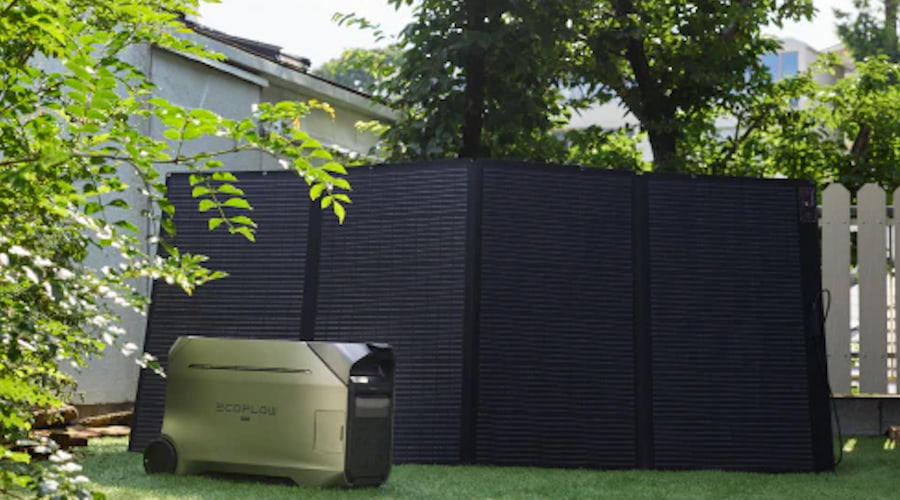How to Convert kVA to Amps: Simple Calculations
Looking at an electrical spec listed in kVA and wondering how that translates to amps? Whether you’re working on a home project or dealing with a three-phase setup in a commercial space, knowing how to convert kVA to amps is essential.
It’s simpler than it seems. In this guide, you’ll learn exactly how to calculate kVA to amps for both single-phase and three-phase circuits. We’ve also included an easy-to-follow chart and real-world examples to make things even clearer.
What Are Amps?
Before we dive into the conversion from kVA to amps, it helps to first understand the three basic terms in any electrical system: volts, amps, and watts.
Amps (A), short for amperes, measure the flow of electric current. In simple terms, it tells you how much electricity is moving through a wire at any given moment. The more amps, the more current is flowing.
To put it into perspective, think of electricity like water flowing through a pipe. Volts (V) are the pressure pushing the water through, while amps are the amount of water actually flowing. Together with watts (W)—which measure total electrical power—you get the full picture.
The basic formula is:
Watts = Volts × Amps
So, if you know how many volts your system uses and how many amps are flowing, you can figure out how much power is being consumed.
What Is kVA?
When dealing with electrical systems, especially in larger installations or when selecting equipment like generators or transformers, you’ll often encounter the term kVA, which stands for kilovolt-amperes. This unit measures apparent power in an electrical circuit.
To break it down:
Kilo (k): A prefix meaning 1,000.
Volt-amperes (VA): A unit of apparent power, calculated by multiplying voltage (V) by current in amperes (A).
So, 1 kVA equals 1,000 VA.
It’s important to distinguish between apparent power (kVA) and real power (kilowatts or kW):
Real Power (kW): The actual power consumed by the equipment to perform useful work.
Apparent Power (kVA): The combination of real power and reactive power (which doesn’t perform useful work but is necessary to maintain voltage levels in the system).
The relationship between kVA and kW is determined by the power factor (PF), which reflects the efficiency of the electrical system. In many cases, especially for generators, a common power factor used is 0.8.
The formulas to convert between kVA and kW are:
kW = kVA × Power Factor
kVA = kW ÷ Power Factor
How to Convert kVA to Amps?
Now that you know what kVA and amps are, let’s get to the good bit—how to convert kVA into amps. The conversion depends on two key things:
The type of electrical system (single-phase or three-phase), and
The voltage of the system.
Each setup has its own formula, so we’ll walk you through how to convert kVA to amps per phase:
Convert kVA to Amps in Single-Phase
If you’re working with a single-phase AC system (common in most UK homes and smaller businesses), you can use this simple formula to calculate amps from kVA:
Amps = (kVA × 1,000) ÷ Volts
Here’s how it works:
Multiply the kVA value by 1,000 to convert it to volt-amperes.
Divide that number by the voltage of your system (230V is the standard in UK households).
Example:
Let’s say you have a 5 kVA load on a 230V single-phase system.
Amps = (5 × 1,000) ÷ 230 = 5,000 ÷ 230 ≈ 21.74 amps
So, you’d need a system that can handle around 22 amps
Convert kVA to Amps in Three-Phase Circuits
In three-phase systems—which you’ll usually find in bigger buildings, industrial facilities, or commercial spaces—the calculation is a bit more involved since the load is split between three wires. On top of that, there are two different voltages to consider, depending on how the load is connected:
Line-to-Line (L-L): Voltage measured between any two of the three phases – typically 400V.
Line-to-Neutral (L-N): Voltage measured between one phase and neutral – typically 230V.
Convert kVA to Amps in Three-Phase Systems (Line-to-Line)
f you’re dealing with a balanced three-phase load connected line-to-line (like a motor), use this formula:
Amps = (kVA × 1,000) ÷ (√3 × VL-L)
Or:
Amps = (kVA × 1,000) ÷ (1.732 × VL-L)
Example:
You have a 10 kVA load on a 400V three-phase supply (line-to-line).
Amps = (10 × 1,000) ÷ (1.732 × 400) = 10,000 ÷ 692.8 ≈ 14.44 amps
Each phase carries around 14.44 amps.
Convert kVA to Amps in Three-Phase Systems (Line-to-Neutral)
If you’re supplying three separate single-phase loads from a three-phase system, where each is connected line-to-neutral, the total kVA is split equally across the three phases.
Use this formula:
Amps = (kVA × 1,000) ÷ (3 × VL-N)
Example:
You have a 9 kVA load evenly split across a three-phase 230V system (line-to-neutral).
Amps = (9 × 1,000) ÷ (3 × 230) = 9,000 ÷ 690 ≈ 13.04 amps
So, each phase carries about 13 amps.
kVA to Amps Conversion Chart
If you just need a quick answer without diving into the formulas, here a simple kVA to amperage conversion chart for common UK voltages:
| kVA | Single-Phase (230V) | Three-Phase (400V VL-L) | Three-Phase (230V VL-N) |
|---|---|---|---|
| 1 | 4.35 | 1.44 | 1.45 |
| 2 | 8.7 | 2.89 | 2.9 |
| 3 | 13.04 | 4.33 | 4.35 |
| 4 | 17.39 | 5.77 | 5.8 |
| 5 | 21.74 | 7.22 | 7.25 |
| 6 | 26.09 | 8.66 | 8.7 |
| 7 | 30.43 | 10.1 | 10.14 |
| 8 | 34.78 | 11.55 | 11.59 |
| 9 | 39.13 | 12.99 | 13.04 |
| 10 | 43.48 | 14.43 | 14.49 |
| 15 | 65.22 | 21.65 | 21.74 |
| 20 | 86.96 | 28.87 | 28.99 |
| 25 | 108.7 | 36.09 | 36.23 |
| 30 | 130.43 | 43.3 | 43.48 |
| 35 | 152.17 | 50.52 | 50.72 |
| 40 | 173.91 | 57.74 | 57.97 |
| 45 | 195.65 | 64.95 | 65.22 |
| 50 | 217.39 | 72.17 | 72.46 |
Practical Examples of kVA to Amps Conversion
Understanding the formulas is one thing—but seeing how they apply in real-world situations makes it all click. Below are a few practical examples to help you get comfortable converting kVA to amps across different types of systems:
Example 1: Single-Phase Heater Installation
Let’s say you’re installing a single-phase electric heater rated at 7 kVA, and it will run on a standard 230V UK supply.
Amps = (7 × 1,000) ÷ 230 = 7,000 ÷ 230 ≈ 30.43 amps
Amps = (7 × 1,000) ÷ 230 = 7,000 ÷ 230 ≈ 30.43 amps
Example 2: Three-Phase Commercial Air Conditioning Unit
You’re sizing a supply for a 15 kVA three-phase air conditioning unit connected line-to-line on a 400V system.
Amps = (15 × 1,000) ÷ (1.732 × 400) = 15,000 ÷ 692.8 ≈ 21.65 amps
Each phase will carry around 21.65 amps. You might use a 25A breaker per phase to allow for a safe margin.
Example 3: Three-Phase Lighting Circuits (Line-to-Neutral)
You have a lighting setup spread evenly across three phases, drawing a total of 12 kVA. Each phase feeds lighting through a line-to-neutral connection on a 230V supply.
Amps = (12 × 1,000) ÷ (3 × 230) = 12,000 ÷ 690 ≈ 17.39 amps
Each phase carries about 17.4 amps. A 20A circuit per phase would typically cover this, again allowing for margin and diversity.
Example 4: Choosing a Solar Generator for Home Backup
Let’s say you’re planning ahead for power cuts or looking to reduce your reliance on the grid. Instead of those noisy, fuel-powered generators, you want a solar generator (portable power station paired with solar panels) that can keep your essentials running—things like your fridge, Wi-Fi router, lights, maybe even a kettle or microwave during an outage.
After adding up your critical loads, you estimate you’ll need around 5 to 7 kVA of backup power to stay comfortable and connected during an outage. That translates to roughly 22 to 30 amps on a standard 230V single-phase supply:
Amps = (7 × 1,000) ÷ 230 = 30.43 amps
With this kind of demand, a portable power station with high output and good battery capacity is essential—and that’s where the EcoFlow DELTA Pro 3 really shines.


The DELTA Pro 3 offers a robust 4000W output, easily covering your everyday essentials and even supporting high-demand appliances like a microwave, electric kettle, or small water pump. It features a 4kWh battery capacity, which is ideal for several hours of reliable use, and if needed, you can expand the system up to 12kWh to cover longer outages or additional circuits.
Best of all, it’s designed for solar charging—just connect EcoFlow solar panels, and you can harness up to 2600W of solar input during the day to top up your battery. That makes it a fantastic option for homeowners who want energy independence, even during extended grid failures.


Other highlights of the EcoFlow DELTA Pro 3 Portable Power Station include:
Ultra-quiet operation – just 30 dB under 2000W, so it won’t disturb your household
IP65 weather resistance, durable LFP battery cells, and up to 11 years of daily use
App control via the EcoFlow app for easy monitoring and management
Compact and portable – with large wheels and a pull-out handle
If you’re after a smart, long-lasting backup power solution for your home, the EcoFlow DELTA Pro 3 solar generator is an excellent investment. It gives you peace of mind when the lights go out, without the fumes, fuel, or fuss of traditional generators.
Conclusion
By now, you’ve got a solid understanding of how to convert kVA to amps, and you can see how useful that knowledge is when dealing with electrical systems—whether you’re picking out the right generator or making sure your wiring can handle the load. Just remember: the key is knowing whether you’re working with a single-phase or three-phase system, then plugging the values into the right formula. With a bit of practice, you’ll be able to do these calculations quickly and confidently whenever you need them.
FAQs
How many amps is 50 kVA?
It depends on the type of electrical system and the voltage. Here are some quick calculations:
Single-phase (230V): 50 kVA × 1,000 ÷ 230 = 217.39 amps
Three-phase (400V line-to-line): 50 kVA × 1,000 ÷ (√3 × 400) ≈ 72.17 amps
Three-phase (230V line-to-neutral): 50 kVA × 1,000 ÷ (3 × 230) ≈ 72.46 amps
How do I convert amps to kVA?
To convert amps to kVA, you need to know the voltage of your system and whether it’s single-phase or three-phase. Use one of the formulas below:
Single-phase: kVA = (Amps × Volts) ÷ 1,000
Three-phase (line-to-line): kVA = (Amps × √3 × Volts) ÷ 1,000
Three-phase (line-to-line): kVA = (Amps × √3 × Volts) ÷ 1,000
Just plug in your values, and you’ll have your kVA!
Does the voltage level impact the kVA to amps conversion?
Yes, voltage has a direct impact on the kVA to amps conversion. The same kVA rating will result in different amps depending on the voltage level of the system. For example, a 10 kVA load on a 230V system will draw more amps than a 10 kVA load on a 400V system.
That’s because: Amps = (kVA × 1,000) ÷ Voltage (or a variation depending on phase type)
So, the higher the voltage, the lower the current, and vice versa.